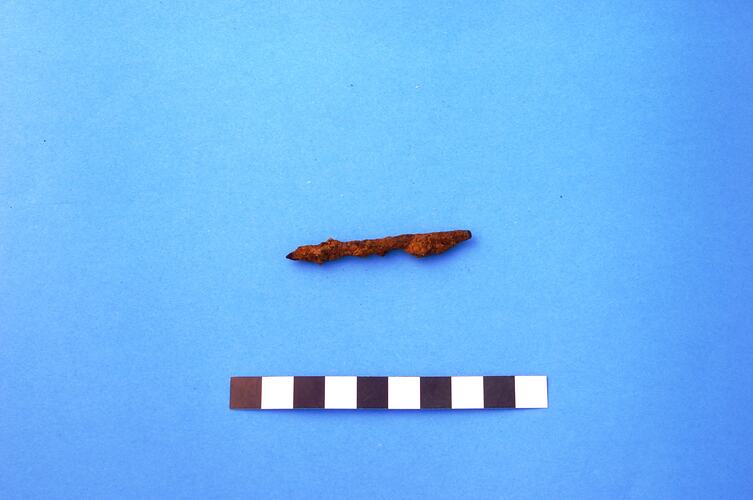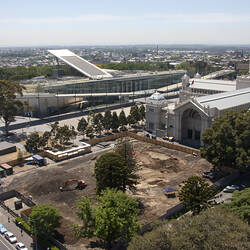Summary
The first recorded wire nail making machine was developed by Adolph Feliz Brown of New York in 1851. Wire nails were first imported into Australia in 1853. By the 1870s, improvements in technology meant that wire nails were cheap and plentiful and replaced the wrought nail.
Physical Description
One shaft of a wire iron-alloy nail. Manufacturing period is from the 1850s.
Physical Description
One shaft of a wire iron-alloy nail. Manufacturing period is from the 1850s.
More Information
-
Collection Names
-
Collecting Areas
Public Life & Institutions, Historical Archaeology, Royal Exhibition Building
-
Acquisition Information
Transfer from Godden Mackay Logan Heritage Consultants (GML), Department of Archaeology, La Trobe University, Australia Gallery, History & Technology Department, Museum Victoria, 20 Nov 2009
-
Manufacture Date
-
Context Number
G11/4/8/006
-
Site
Australia, Victoria, Melbourne, Royal Exhibition Building Western Forecourt
-
Activity
-
Specific Activity
-
Technique
-
Classification
Historical archaeology, Architectural - structural, Fastening
-
Category
-
Discipline
-
Type of item
-
References
Poplar Forest 1996: 38; Miller et al 2000: 14; Varman 1980: 107
[Book] 1996. Poplar Forest Archaeology Lab and Field Manual., 1996, 38 Pages
[Article - Journal] Miller, George L., et al. Telling Time for Archaeologists. Newsletter of the Council for Northeast Historical Archaeology. 29: 1-22., 2000, 14 Pages
[Article] Varman, Robert. 1980. The Nail as a Criterion for the Dating of Building and Building Sites (Late 18th Century to 1900), in Birmingham, Judy & Bairstow, Damaris. 1980. Papers in Australian Historical Archaeology. 104-112., 1980, 107 Pages
-
Keywords
Archaeology, Building Materials, Royal Exhibition Building, World Heritage

